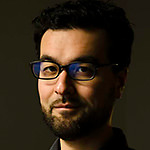
A long time ago, the first chancellor of post-war Germany, Konrad Adenauer, joined a TV interview where a journalist asked him the following question: “You were often called ‘The Great Simplifier of Politics’. Do you consider this characterization to be complimentary or derogatory?” The 89-year-old Adenauer, without hesitation, replied, “I take this as a great compliment. Because in fact, one has to see things so deeply that they are simple. If you just stay on the surface of things, they are not simple. But when you look into the depth, you see what is true, and that is always simple.”
For Adenauer, simplifying meant not oversimplifying — to brush over complexity or to superficially describe symptoms — but to find the core of an issue and expose it in plain terms.
That interview occurred in 1965. Since then, the world has grown much more interlaced. As technology expands the number of voices in the public sphere, the abundance of information about the human condition amasses to such a deep ocean that I wonder if it is still possible to reach down to the simple essence of things. However, the age of globalized big data, filter bubbles, and “fake news”, and a tireless attention economy call for exactly that strength: to navigate the deluge of information. Since answers are only a Google search away, walking encyclopedias are no longer in demand, replaced by analysts, mavens, and data scientists. It’s the hour of the “explainer” who can make sense of it all.
Maybe this comes close to how we could describe the people the Bible calls “prophets”.

When we hear the word prophet, we often picture someone who predicts the future. That is a misconception. Biblical prophets such as Huldah or Amos were mainly concerned with the immediate present and what would happen if it continued unchanged. Emerging during times of crises, they became the commentators and cultural critics of antiquity. But unlike their modern equivalents, they did not surface from institutes or corporate-sponsored news networks. They were often ordinary people who only became public figures after experiencing a powerful “calling” from God.
I think the definition by French theologian Oscar Cullmann (1902-1999) can further our understanding. The prophet appears to explain “to the people the true meaning of all events,” Cullman writes. “He informs them of the plan and will of God at the particular moment.”
The true meaning of all events. Cullman does not talk about intellectual, data-driven analyses, but a spiritual interpretation of what is happening to the world. In other words, God’s perspective. The prophet thus served as a messenger between the worlds, becoming a conduit between heaven and earth.
Oftentimes, the biblical prophets delivered a massive critique of the ruling establishment. Their diagnoses boiled down to how Israel and its elites had grown alienated from God because of unfettered self-interest. And while they often described the catastrophic results of that evil in painful clarity, it was the anguish over the lost relationship between God and people that truly cut deep. The heartache of God had to be expressed in a more emotional way: the language of poetry. The prophets reached down to the core and translated the entanglements of their time by using powerful rhetoric and metaphors.
Jesus continued this tradition. The kingdom he announced marked a profound renewal in the relationship between heaven and earth. Its mystery could only be outlined through parables rich in symbolism. In Jesus’ imagination, nations became vineyards, words became seeds, and his body became a loaf of bread.
The Bible abounds with such timeless, archetypal imagery that reverberates across generations and cultures. Oftentimes, they are inspired by the eternal motions of nature. Seasons, plants, elements, and animals used to play a bigger role in human experiences. The patterns of nature rhyme with each other and are embedded in the deep wells of our unconscious. That is why the Bible speaks of a rainbow as the symbol of God’s covenant, about mountains on which paradigms are shifted, and of roaring monsters representing the empires of men.
If God speaks to us through such images, could we possibly open up a spiritual pathway to interpret the disruptions of our age by becoming more familiar with the poetic/prophetic imagination? Could it lead to wisdom necessary for Christ-like action and answers?
The good news is that we already have a treasure trove of symbolic images waiting to enrich us. Take, for example, the word “soil” in the biblical creation myth.
God uses “the dust of the soil” (‘apar min ’adamah) as the material to build the first human: Adam. Throughout the story, the bond between soil and homo sapiens is emphasized. If our bodies have a fateful connection with the ground from which life grows, what then does it mean when we maim the face of the earth through industrial mining and soak it with agricultural pesticides? The way we treat the soil and how close we live to it has repercussions on our own identity as images of God.
Surely the dangers of environmental mistreatment are not news. But it shows how our ancestors had an intuitive understanding of the fundamental processes that hold the world together. What if we could be more in touch with this ancient wisdom? Could it serve us by foreseeing the effects of quashing the wealth of nature, food, and community in the name of development that alienates us from our roots? Again, this has to do with insight about the relationships among humans, the creation, and the life-giving God.

Let me give another example: the image of a “tent”.
Abraham was resting at his tent one day when God stopped by. God did not enter, so Abraham, with nomadic hospitality, served him outside under the trees. Centuries later, a caravan of foreign laborers was wandering through the scourging desert. They were fleeing from a murderous North African tyrant. Then their leader Moses turned around and announced that the god who had liberated them from slavery demanded a sanctuary.
What would such a sanctuary in the middle of nowhere look like? Like one of the temples or palaces they had built back in Egypt? No, this god said: “Build a tent.” The god who had met their ancestor Abraham at his tent decided to pitch his own among the landless Israelites; a place that reflected their provisory and unstable situation. He called it ‘ohel mow‘ed, “Tent of Encounter”.
If the God of the Bible desired communion with refugees, how does God see the countless people who live in tent cities or stay stranded in desert camps today? And could there be a significance that the apostle Paul, who invited Gentiles into the liberation of Christ, had been a tentmaker by trade? Was he inspired by the words of Isaiah: “Enlarge the place of your tent…!” (Isaiah 54:2 ESV) while other early Christians tried to limit the salvation to their own tribe?
The encouraging fact about prophecy is that the Spirit who aroused biblical heroes like Deborah and Isaiah is inviting all of us into God’s work. In Acts 2:17, Peter declares that God’s old promise has come true: “After that I will pour out my spirit upon everyone; your sons and your daughters will prophesy, your old men will dream dreams, and your young men will see visions. In those days, I will also pour out my spirit on the male and female slaves” (Joel 2:28-29 CEB). The passage emphasizes that, unlike Israel’s priesthood, women are — and always have been — included in this role.
I believe that many of us can activate their dormant gift of poetic prophecy/prophetic poetry. Poets, and artists in general, are already accustomed to tapping into their intuition to find meaningful images that translate deeper realities. I think of the songs of Bob Dylan, the poems of Japanese fisherman Nagasawa Tetsuo, and the essays of writer Herta Müller, all of which express so much more than what is at the surface of words. Of course, the same applies to filmmakers, painters, rappers, and other creative people, too!
It took me a while to learn a different way of reading the Bible, because I grew up with a literal understanding that discouraged looking for nuance. But in growing to pay attention to words and their context, spending quality time in nature, and attuning myself to nature’s rhythms and mechanisms, I slowly developed a more careful, compassionate reading that brought more clarity to the Bible’s prophetic material.
Poetry forges compassion. Immersing oneself in it encourages empathy. That is why I would like us to use the prophetic voice not only to explain the true meaning of all things, but for healing as well. Because I believe that the truth that Cullmann and the prophets refer to always points to the state of our relationship with a life-giving and life-affirming God. Exposing that truth is to offer narratives that help restore the bonds among heaven, earth, and humans.
This might start with disclosing stories that are not pleasant to hear. But it must not stop there. The prophets always offered a bridge to an alternative better future by reminding the community of God’s outstretched hand. I have no doubt that God is calling to us in this present darkness. His voice is gentle but needs to be heard. Let us join voices with God and with the divine messengers of all ages to bring restoration to a world that is breaking apart.

Issey Fujishima is a Japanese German designer and artist active in Melbourne. He has been involved in rural development and disaster relief at the Asian Rural Institute, a Christian nonprofit in Japan. His first book “The Reign of God” is an illustrated novel that retells the passion and message of the historical Jesus. You can find Issey at: thereignofgod.com.

Ellen P. Lea is a Floridian artist who specializes in conceptual illustrations based on society, portraits, cover designs, and viz-dev. She loves food, dogs, and her two beautiful younger siblings. Although her days are busy, she enjoys contributing to great causes with her illustrations when life needs them. She finds Inheritance magazine an inspirational part of her life due to her once being a lost, questioning soul herself, who now has found her true self. You can find her at: ellencreative.com.